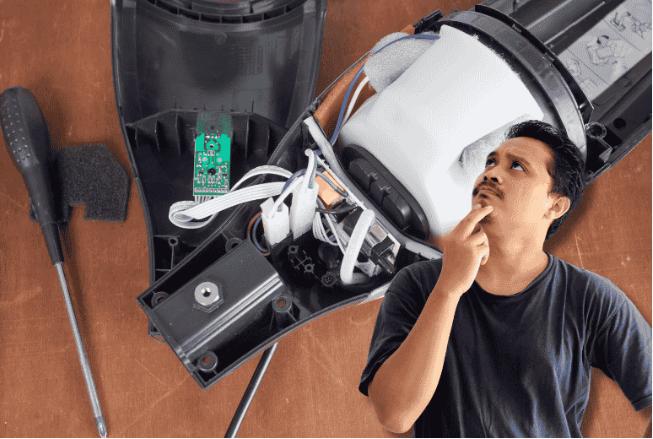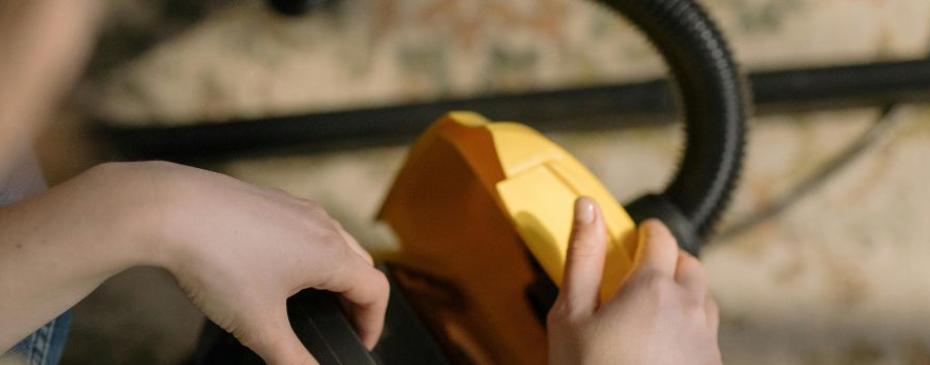Understanding How to Dispose of a Vacuum Cleaner Correctly
Disposing of an old or broken vacuum cleaner can seem daunting, but it’s essential to ensure it’s done correctly to protect our environment. Tossing it in the trash might seem like the easiest solution, but this can lead to harmful environmental impacts. In this blog, we will provide you with a clear, step-by-step guide on how to dispose of your vacuum cleaner properly. Whether you’re looking to recycle, donate, or dispose of it, we’ve got you covered with the right information and resources you need.

Why Can’t You Just Throw It in the Trash?
Vacuum cleaners contain various electronic and mechanical components that can be harmful to the environment if not disposed of correctly. These components include plastics, metals, and sometimes hazardous materials like batteries and motor oils. When vacuum cleaners end up in landfills, these materials can contribute to soil and water pollution.
Additionally, many parts of a vacuum cleaner can be recycled or reused. By throwing your vacuum cleaner in the trash, you are not only contributing to environmental harm but also missing out on the opportunity to recycle valuable materials. Moreover, some regions have strict regulations against disposing of electronic waste in the general trash due to the potential environmental hazards.
Proper disposal ensures that you comply with local laws and regulations while also promoting sustainability. This method enables the recovery of reusable parts and safe disposal of toxic substances, benefiting both the community and the environment.
How to Dispose of a Vacuum Cleaner Step by Step
Step 1: Check the Condition of the Vacuum
First, assess the working condition of your vacuum cleaner. If it’s still functional but you’re looking to upgrade, it might have another life waiting for it elsewhere. Conducting a condition check helps you determine the best disposal option.
Step 2: Explore Donation or Resale Options
If your vacuum is in working condition, consider donating it to local charities, thrift stores, or community centers. Websites like Freecycle, Craigslist, and even social media platforms often have communities of people seeking or offering used appliances. Selling it second-hand is also an option. This extends the lifecycle of the device and benefits someone in need.
Step 3: Find a Local E-Waste Recycling Center
Look for electronic waste (e-waste) recycling centers in your area. These facilities are equipped to handle the breakdown of electronic appliances safely. Many municipalities have periodic e-waste collection events, and some electronic stores also offer recycling programs.
Step 4: Remove Hazardous Parts Before Disposal
Before taking your vacuum cleaner to a recycling center, be sure to remove any hazardous components such as batteries and motor oils. These should be disposed of according to your local hazardous waste guidelines because they require special handling.
Step 5: Follow Municipal Disposal Guidelines
Finally, check with your local waste management services for specific disposal guidelines. Every municipality has different regulations regarding electronic waste, and ensuring compliance avoids potential fines and contributes to environmentally responsible actions.

Can Vacuum Cleaners Be Recycled?
Yes, vacuum cleaners can be recycled, but it’s essential to know which parts can be processed. Components such as metal parts, plastic casings, and motor assemblies are often recyclable. The recycling process involves dismantling the vacuum cleaner, sorting the materials, and processing them for reuse. This not only reduces the waste sent to landfills but also conserves resources by recovering valuable raw materials.
E-waste recycling centers are equipped to handle these processes effectively. By ensuring your vacuum cleaner is recycled, you are contributing to a circular economy where products are repurposed, reducing the need for new raw materials and energy-intensive manufacturing processes.
Where Can You Take a Vacuum Cleaner for Disposal?
You have several options for vacuum cleaner disposal. E-waste recycling centers and municipal hazardous waste facilities are the best choices for environmentally-friendly disposal. Many electronic retailers also have take-back programs for old appliances. Additionally, consider local services like bulk waste collection programs offered by your city, particularly during designated electronic waste collection days.
Your community may have specific locations or points of collection dedicated to electronic waste. Always consult your local waste management website or contact them directly for precise instructions and locations.
Conclusion
Disposing of a vacuum cleaner responsibly is crucial for environmental sustainability. By following the proper steps for disposal, donation, or recycling, you make a significant impact on reducing electronic waste and promoting resource conservation. Be proactive and ensure your old vacuum cleaner is handled the right way.
FAQ
What parts of a vacuum cleaner can be recycled?
Various parts such as the metal components, plastic casing, electronic parts, and motor assemblies can be recycled. The process involves dismantling the unit, sorting materials, and processing them for reuse.
Is it better to repair or dispose of an old vacuum?
If the vacuum cleaner can be repaired at a reasonable cost, repairing it is often the more sustainable option. Repairing extends the life of the appliance and reduces waste.
Can I donate a working vacuum cleaner?
Yes, if your vacuum cleaner is in working condition, donating it to local charities, thrift stores, or community centers is a great option. This helps others in need and extends the life of the vacuum.
